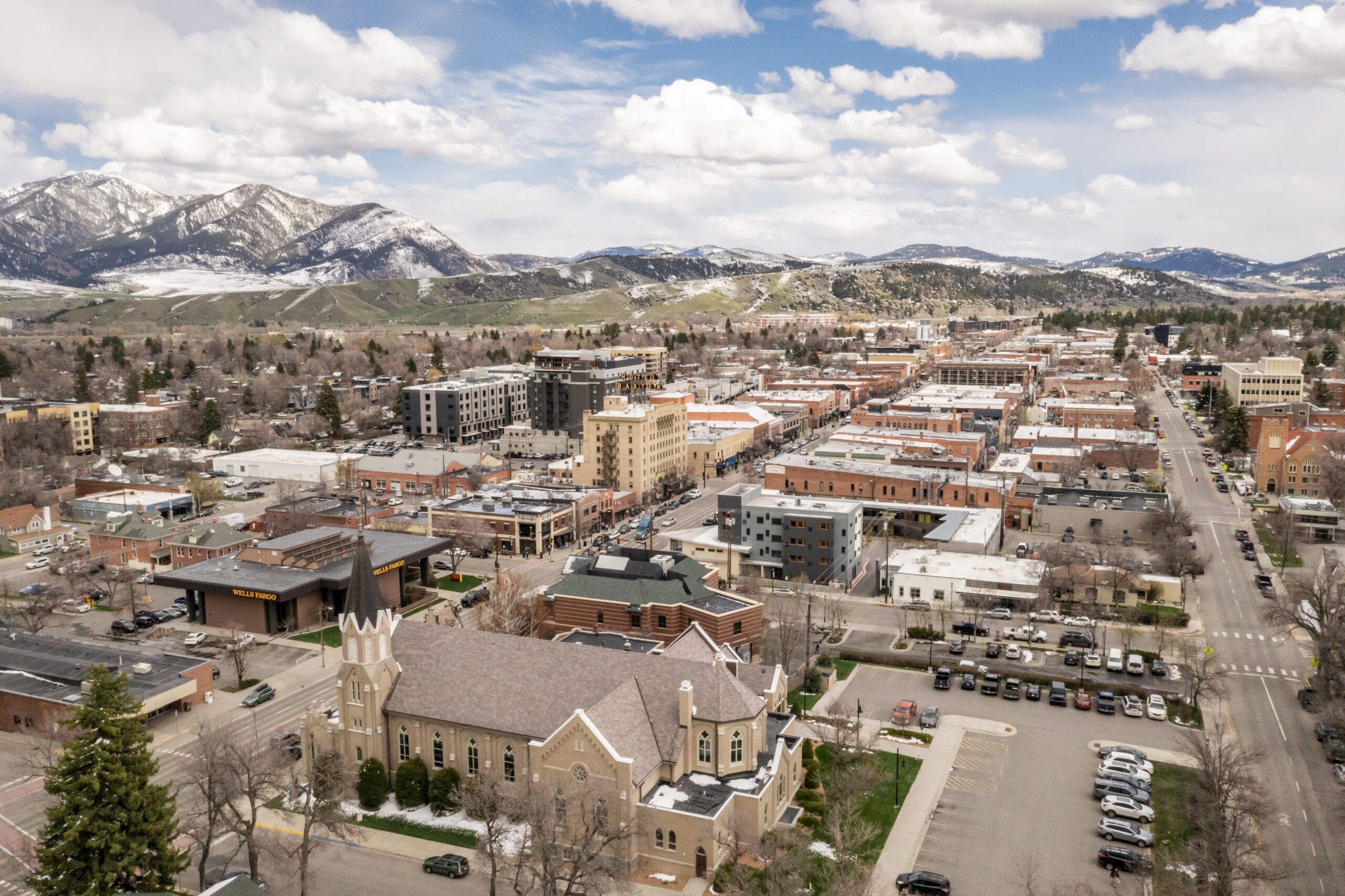The locals, the resort and the new Big Sky
This is the first installment in an ongoing series centered on Big Sky’s growth, the challenges it presents and potential solutions. While the Ikon Pass is a contributing factor to this growth, it’s not alone. Ikon serves as our jumping-off point to investigate the broader dynamics at work in Big Sky.
By Bay Stephens EBS LOCAL EDITOR
BIG SKY – In 2008, Vail Resort’s Epic Pass burst onto the ski scene, offering relatively cheap season passes with unlimited access to a dozen Vail-owned resorts in the American West. On its heels, the Mountain Collective landed in 2012 as four resorts partnered to allow two days of skiing at each.
Enter the Ikon Pass, the first real competitor to Epic, which debuted in January of 2018, and granted unlimited access to 14 resorts and up to seven days at 23 other destinations, including Big Sky, for the 2018-2019 season.
Throughout this first full winter, the Ikon Pass became the subject of local grumblings in partner ski towns across the U.S. that are having busier seasons than usual. The disgruntlement and disparaging stickers directed at Ikon got so bad that three different heads of ski resorts wrote letters to their respective communities in Aspen, Jackson and Big Sky.
On March 6, Big Sky Resort General Manager Taylor Middleton submitted his letter to the editor that EBS published online the same day. It hit with a splash, going viral and triggering a storm of comments – many contentious – on the Facebook pages of EBS, Big Sky Resort and Unofficial Networks, among others.
The letter’s message: Be nice to Ikon passholders since we were all first-timers here once, too. According to multiple interviews by EBS staff, the letter left many Big Sky locals feeling reprimanded, unappreciated and distanced from the resort they love.
In the wake of Middleton’s letter, EBS gathered the perspectives of locals, the resort and community leaders to determine whether the Ikon Pass is really the problem, or just the tip of an iceberg, indicating larger issues of growth and a lack of communication in the Big Sky community.
The local factor
On any given Saturday, families and individuals have had to find spots on the floor and against walls to eat their lunches in the packed upstairs cafeteria of the Mountain Mall at Big Sky Resort.
An influx of skiers is palpable this season. And the pinch has locals talking. From Big Sky restaurants to area watering holes, the ski hill to the laundromat, a tone of discontent has percolated throughout the community this winter.
“The cry is that [locals] just feel they’re not treated equitably,” said Candace Carr Strauss, CEO of Visit Big Sky and the Big Sky Chamber of Commerce, at a recent VBS board meeting.
For many local residents, Middleton’s letter solidified this sentiment of being left behind.
“At the end of the day, there are all of these people that are saying, ‘Hey, we need some love, Big Sky [Resort],’” Lotus Pad owner Alex Omania told EBS.
Brian Hurlbut, executive director of the Arts Council of Big Sky, agreed that the letter could have offered more solutions rather than asking community members to be nice to Ikon visitors. “[It was] kind of a slap in the face to the community of people that have lived here and skied here for a long time,” he said.
Both Hurlbut and Omania think this winter brought more visitors than Big Sky’s infrastructure could handle, and Ikon has only added to the mix.
“Tourism and visitors have been on the rise for a number of years, so we don’t necessarily need more people right now,” Hurlbut said. “And that’s what the Ikon pass is doing. It’s bringing even more people who otherwise wouldn’t have come here.”
While some visitors came to Big Sky long before the Ikon debut, the pass has opened the door for others, such as Elease Miller and Donna Scott, Ikon passholders hailing from Boulder, Colorado, on a 24-member group trip with the Flatirons Ski Club.
“[Ikon] brought us here, or we wouldn’t have come,” Miller said. “You can’t afford single day tickets anymore at any of the areas.”
The Lone Peak Tram has been one contentious issue for Big Sky’s passionate skiers who hold a tremendous sense of pride in the iconic 15-person ski lift. Hurlbut said the line has been too long this year, so he doesn’t wait in it though it seems unfair to him that Ikon passholders have the same access.
“That brings in the question, is [Ikon] starting to devalue the other season pass products that [the resort] offers,” Hurlbut said, adding that he pays a premium to have unrestricted access to the tram. “The Ikon Pass includes tram access. They’re not paying any more [money].”
He suggested some sort of upcharge for Ikon Pass users who had their sights set on skiing off the peak, shortening the line for everyone else and not affecting those indifferent to the tram.
For Omania, the influx of visitors throws into sharp relief a shortage of employees, many of whom work multiple jobs such as at the resort and in her restaurant. Although the increase is good for business, she says, the lack of employees and incentive to keep them makes running the business challenging.
Season passes are a key benefit for workers, Omania said, which is why she bought seven for her managers, though she wishes she could provide passes for all her workers. Her budget for benefits revolves around this expenditure, she said, adding that it’s the same for many of the area’s small businesses.
One solution in Omania’s mind would be for the resort to give ski passes to local businesses to distribute among employees, helping reduce the strain on these shops to afford the passes and keep workers on payroll. She pointed out that this poses no threat to further lengthening lift lines because businesses buy passes for their workers anyway.
Omania would like to see Big Sky Resort take more of a leadership role in connecting with local businesses considering the resort plays a keystone role in the community. She said working together to create more immediate solutions to the stressors pressing the community would benefit everyone.
“This is a really good opportunity for [the resort] to be a positive role model in this community,” Omania said. “… Ikon is not really the issue. The issue is what all these people are doing to the community and how we just aren’t ready for all these people.”
Is Ikon really the problem?
If the pattern at Big Sky resembles Jackson or Aspen, Ikon is only a sliver of the issue and points to larger and sweeping undercurrents.
Attributed to record snowfall, Jackson Hole Mountain Resort’s slopes swarmed this season. JHMR president Mary Kate Buckley wrote in her letter to Jackson Hole News and Guide that local passholders comprised 39 percent of the resort’s total skiers while Ikon skiers represented 16 percent. She added that half of that 16 percent were visitors who skied Jackson in past seasons anyway, only on different pass offerings such as Mountain Collective or day tickets.
Overall, Buckley credited 8 percent of the year’s incremental increase in skier visits to the Ikon Pass.
Aspen’s season tracks a similar pattern. According to Jeff Hanle, Aspen Skiing Company’s VP of communications, Colorado’s been pounded with snow this year, and by powder-starved locals following last season’s drought. Local pass sales are up 10-12 percent over two seasons ago, Hanle told EBS, a more comparable season to this year in terms of snowfall, but up a whopping 40 percent over the dry spell of last season.
Hanle said Ikon accounts for 9 percent of the 1.2 million skier visits to Aspen’s four mountains as of March 14.
“You can’t point the finger at Ikon passholders here,” Hanle said. “What I tell my friends and neighbors: When you’re standing in a line with people, look next you. They’re your friends and neighbors for the most part.”
Big Sky Resort has not released its skier visitation data and Taylor Middleton declined to interview for this story, so it’s difficult to say exactly what the case is here. However, one statistic—increasing numbers of ambulance transports—can act as a sort of proxy for visitation. The numbers show what everybody already knows: Big Sky is blowing up.
According to Big Sky Fire Department Chief William Farhat, ambulance transports are 37 percent higher for February of this year than the same month last year, which was likewise 37 percent higher than February of 2017, before Ikon had any role in Big Sky’s visitation.
“That’s a lot,” Farhat said. “Two years in a row, you’ve had these large jumps.”
These leaps in visitation growth make it difficult to pin Ikon as the sole cause of booming visitation numbers, but rather highlight Big Sky’s overall success at marketing itself as a community. Farhat said 90 percent of the ambulance transports in February were for nonresidents, the highest the department has ever recorded and a far cry from the average 70-75 percent during ski seasons past.
“Ninety percent is a shockingly high number,” Farhat said, adding that the influx of visitors and increasing frequency of service calls can leave his staff stretched thin. “It’s a lot to manage. We’re outstripping any growth projections we’ve ever had.”
Like many other resort towns, Big Sky pumps local and state dollars into billboards, newsletters and public relations campaigns across the nation. Farhat says the scenario is a Catch-22.
“As we market ourselves as a community, we’re reaping the benefits but there are also challenges,” Farhat said. “Big Sky is a victim of its own marketing.”
The bus showed up
Big Sky’s growth feels more exponential than linear, prompting the Big Sky Water and Sewer District to get the ball rolling on a $21.7 million plant upgrade to meet the blistering growth. The Bozeman Yellowstone International Airport has seen record-breaking passenger volume for the ninth consecutive year in a row, according to a Jan. 9 airport press release; the facility handled 142,753 more passengers in 2018 than 2017, an increase of 11.9 percent.
Yet Ikon is taking the heat for Big Sky Resort’s longer lines.
The board of Visit Big Sky, the area’s official marketing entity, addressed negativity surrounding Ikon during its March 21 meeting.
“There is a significant issue and misperception with where this growth is coming from,” said Annie Pinkert, Big Sky Resort’s VP of business and also a VBS board member, during the meeting. “Ikon represents a small, very small slice of the growth of skier visits to Big Sky Resort.”
Along with increased air seats, season pass growth is a major contributor to the rise in skier visits as Big Sky and Bozeman grow at six and three times the national average, respectively, she told the VBS board.
For Big Sky Resort, Pinkert said, economics and skier numbers are a balancing act.
“If we were to lower our price to $949 (the price of an Ikon Pass) for people that are skiing 144 days a year, you would have lift lines like you can’t imagine,” she said. “You can’t have both low prices and no volume. You’ve got to choose.”
Pinkert added that every visitor drawn to Big Sky pays into resort tax in some way.
Ennion Williams, also a VBS board member, said the rush of visitors this year was a realized dream 10 years in the making. The effort, he said, was sparked after the Great Recession when community members asked for resort tax funding to market Big Sky as the “Biggest Skiing in America,” the end goal being for the resort to top 500,000 skier days in a year while benefits trickle down to surrounding businesses and the community.
In tandem with a decade of sustained and coordinated marketing, Williams said the 2017-2018 ski season, which saw massive snow in Montana and a dearth for southern ski areas, put Big Sky squarely on the map.
“This winter the bus showed up, and the bus had the Ikon Pass on it,” Williams said. “Everybody’s fixated on [it as the problem], just because this year we started the Ikon Pass … These people were coming anyway.”
“This is the new Big Sky,” Williams continued. “It’s not going to change. Next year we’re going to have more people than we had this year.”
Stay tuned for our next installment, in which we will examine growth as it relates to Big Sky’s unique housing market.














